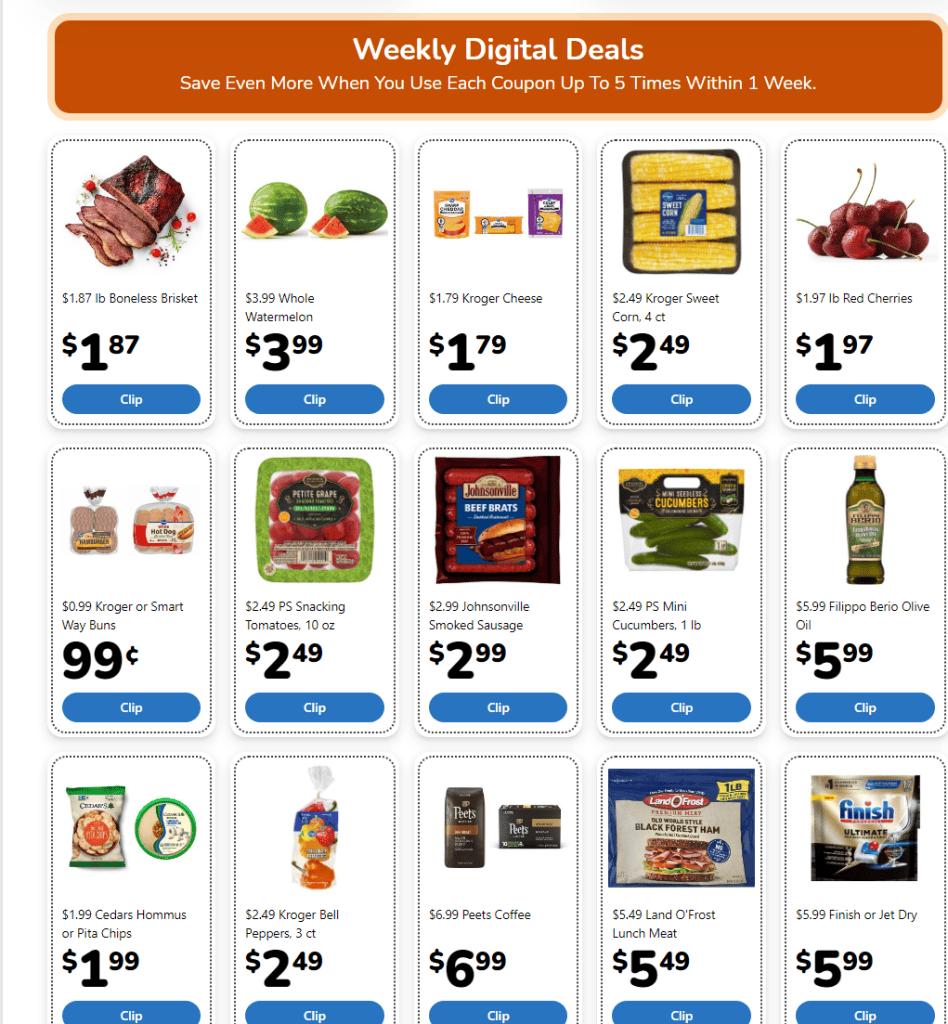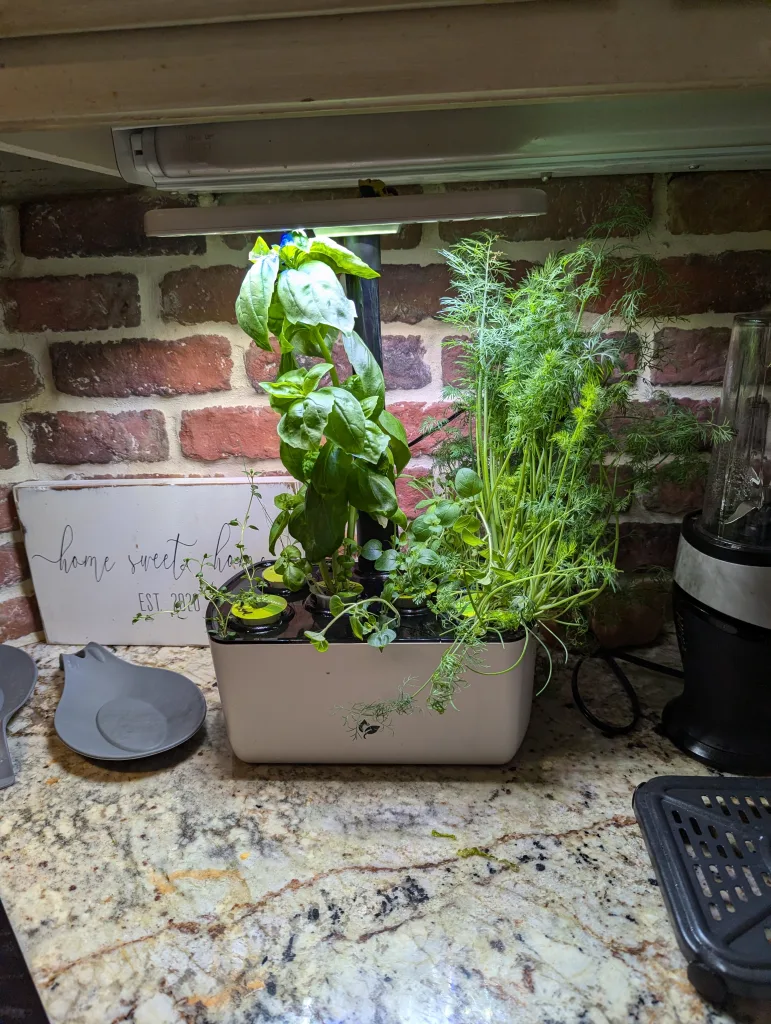In this article, I’ll share 21 excellent ways to save money on groceries in 2024. You’ll be able to take your savings and apply them to other financial goals like saving up for a down payment on a home, paying off high-interest debt, or contributing to your IRA.
One of the 80-20 ways to make concrete progress on budgeting and saving money is to look at comfortable ways to reduce areas of expense that drive the highest cost of living. In the case of food and dining, it is the second largest expense for Americans in their spending, behind housing and ahead of transportation.
Let’s jump into some excellent ways to save money on groceries and stretch your budget!
1. Learn to cook well
One of the most important things you can do to save money on groceries is to learn how to cook well. You don’t have to spend hours in the kitchen to create good-quality, healthy meals for your family. Learning basic techniques and having a good baseline of equipment to make a variety of dishes can make all the difference.
When you learn to cook well, you’ll feel less compelled to go out to eat or order Doordash. Better yet, meal prep or freeze some of your leftovers to have some quick meals ready to go in minutes on days when you just don’t feel like cooking. I’ve written in-depth on this topic in this blog post and highly recommend the read!

2. Become an ingredient household
Pre-made snacks and some items with sugar, etc. carry additional taxes in many states and jurisdictions. You pay a lot extra for premade food. One of the best things you can do to save money on groceries is to become an ingredient household and buy individual ingredients that don’t carry any sales tax. Admittedly, this requires you to cook a lot more, but if you learn to keep a basic stock of pantry, fridge, and freezer staples, you can cook an almost endless variety of meals and usually have whatever you need on hand to mix things up.
3. Look for discounts and sales
I love deals. And the first place I usually look when shopping is to see what’s on sale. At Costco, you can more or less count on everyday great prices and that you’re getting good value for your money. But at more traditional grocery stores, it helps to look at weekly savings, and what’s on sale, and use that as a starting point to plan meals for the week.
I do about half of my family’s grocery shopping at Kroger. Through the app, it’s easy to see what’s on sale without having to walk all the aisles. They also have limited flash deals that offer incredible savings on items that are overstocked or are close to expiration. Usually, I can grab a loaf of healthy, discounted bread for $1-$2 (normally $5+). Any bread I can’t use in time gets thrown in the air fryer and becomes homemade croutons for salad.

Check the savings and browse the coupon catalogs that many grocers send out via email for some ideas on savings and work them into your weekly grocery plan!
4. Get 6% cash back on your grocery purchases (up to $6000 per year)
One of the best things for my family’s food budget has been the American Express Blue Cash preferred which earns a staggering 6% cashback on grocery store purchases on up to $6000 of purchases per year.

If you’re diligent enough to always pay off your entire credit card balance every month, this card can generate some incredible savings that more than make up for the $95 annual fee. Apply for the American Express Blue Cash Preferred today!
After you’ve exhausted the $6000 in spending per year, put your grocery purchases on another rewards card to keep the savings flowing.
5. Learn to elevate your staples
Cheap staples like noodles, pasta, potatoes, rice, beans, and eggs can go a long way when cooked well.
When elevated, you can turn these cheap staples into some seriously impressive dishes at home. I try to always make healthy and delicious meals for my family. By incorporating some of these cheap staples into some meals, my family can better stretch the budget while keeping things healthy.
Better than french fries oven-roasted potatoes
The best 3-ingredient pasta sauce ever
Better than blue box stovetop mac & cheese
6. Minimize food waste
Like almost every American, I’m guilty of food waste. It’s an active area I’m trying to improve on. It hurts to throw away food that went bad due to overbuying, poor planning, or otherwise laziness. The USDA found a shocking 38% of the food supply in America goes to waste! What a shame.
To try to minimize food waste wherever possible, it helps to have a meal plan for the week. Eat or otherwise freeze your leftovers and ingredients you don’t expect to use in time. Prioritize eating your fruits and veggies early in the week so you don’t end up with too many when they are close to going bad. Make a meal plan for the week and stick to it!
Purchase frozen fruits, vegetables, and protein like shrimp and chicken. I’m a big fan of using frozen veggies in cooking to save time and always have vegetables on hand in a pinch.
It always feels like I’m short on freezer space. I’m even considering purchasing a standalone freezer to have more space for meal prep, bulk ingredients, etc. I’m certain the food waste savings would offset the cost of the freezer plus the electricity of keeping it running.
7. Know what you have on hand
It’s good to have a rough idea of everything in your pantry, fridge, and freezer. Avoid buying ingredients you already have a ton of to avoid excess cost. Only buy what you need!
8. Learn new recipes
One of the best ways to reduce takeout/out-to-eat cravings is to learn to make some of your favorite dishes. For example, I’ve learned to make some of my favorites like homemade pizza, smoked BBQ classics like ribs, pulled pork, brisket, smashburgers, and Asian favorites like Pad Thai, Pad See Ew, fried rice, and others.

Whenever a craving hits, I know that I can likely make a restaurant-quality dish and put the savings to work elsewhere.
9. Do your own prep work and save money on groceries!
Ingredients like lettuce, mushrooms, onions, fruit, etc that have been precut at the store carry extra cost. It almost always costs more to buy ingredients that have been prepared, chopped, sliced, etc. These ingredients, especially fresh produce, will go bad a lot faster when they’ve been cut as well. You’re much better off buying these ingredients whole and cutting them yourself right when you’re about to cook.
You’ll save money and your cooking will taste better for it.
Do your own prep instead of buying pre-processed ingredients! All you need is a cutting board and a sharp knife. You’ll get faster as you practice.
Some things to avoid and DIY!
- Pre-marinated meats and pre-seasoned, ready to grill food.
- Precut lettuce or salad bags
- Precut fruits and vegetables.
- Shredded cheese (it’s cheaper to buy whole blocks of cheese)
10. Buy seasonal produce when it’s in season
Produce is cheapest when it is in season, and most expensive when it is out of season. Ingredients in season also tend to taste much better as well! A double win.
Buy seasonal fruits and vegetables and enjoy the flavors of the season in your cooking!
You can search by state to see what’s in season for your local geography. For example, this website lists everything in season in my home state of Texas!
11. Search high and low
As a lesser-known tip to save money on groceries, grocery stores put the highest-margin items in the middle of shelves at eye level. They also put items in this premium aisle real estate that are impulse buys. To find better deals, look lower or higher on the shelf and try to stick to your shopping plan. I like to joke that since I’m 6’6″ tall, cheap groceries are at eye level for me.
12. Join shopper loyalty programs
If there are stores you like, sign up for their mailing list. You’ll get a copy of the weekly ad with savings, and can also join their shopper loyalty programs for cash back or other savings. For example, with Kroger, I get weekly savings plus earn fuel points that can be exchanged for significantly discounted gas.
Most of these shopper programs are completely free to join so don’t miss out on these extra savings with very little effort!
13. Join a Wholesale club like Costco & Sam’s Club
I love Costco. Join a wholesale club and go, and you’ll save a lot of money every year. It’s that simple!
14. Save your time!
Some grocery stores offer no-cost delivery fees with an annual membership. For example, I pay $70/year for unlimited free grocery delivery (There’s no tipping allowed) from Kroger. I can save a ton of time by having my groceries delivered with a minimum order value of $35. Kroger charges the same price for groceries delivered as they do on groceries purchased in the store. The only drawback is that I don’t get to pick my own produce.
But if there’s a problem with my order, it’s easy and automated to get refunded for an item that didn’t meet expectations. The time savings alone are worth a TON. You’ll also save on gas + wear and tear on your car by not having to drive to the store yourself.
Look into this option to see if it’s a good fit for you!
Delivery options like Hello Fresh do offer convenience and time savings, but you end up paying substantially more per portion than you would from a low-cost grocery delivery program from your grocery store.
15. Don’t shop on an empty stomach
Studies have found that if you shop on an empty stomach, you’ll spend more AND buy more unhealthy food on impulse. Do yourself a favor and eat a healthy, filling meal before you go grocery shopping. Your wallet (and waistline) will thank you.
16. Grow a herb garden!
I love to use a lot of fresh herbs in my cooking, but the cost adds up when buying them each week. A dear friend bought me the Aerogarden Harvest hydroponic garden system for my birthday and now I have easy access to weekly harvests of some of my favorite herbs. I love it so much, I’ll probably buy a second to increase the variety I can grow. I was spending $10+ a week on fresh herbs for my cooking, so this is easily saving me $500+/year on my grocery expenses.
It’s a great feeling to chiffonade some fresh basil that I grew to top homemade pizza. Or make a jar of dill pickles using homegrown dill and my wife’s grandmother’s recipe.
Indoors or outdoors, it’s easy to start a herb garden to save money and elevate your cooking!

17. Stock your pantry
Keeping a well-stocked pantry can make it simple to create meals. Things like canned goods and vegetables, pasta, rice, flour, sugar, and oils can help you create numerous meals and augment your fresh veggies and protein.
I can’t tell you the number of times I couldn’t figure out what to make for dinner only to turn to the pantry and freezer and end up enjoying something like scallops & pasta. A well-stocked pantry is key to reducing your monthly grocery spend!
18. Buy frozen ingredients
Frozen veggies, fruits, and protein (raw) can be a fantastic way to always be ready to create a meal. You can stock up on things when they are on sale, and be able to make a wide variety of meals. Foods like frozen carrots, peas, and other vegetables can save you time on your prep work and help you minimize food waste.
I’m a big fan of keeping some frozen staples on hand and always having some frozen proteins like chicken, fish, and shrimp on hand for quick easy meals.
19. Prep and freeze your ingredients before they go bad
Plans change in the middle of the week.
If you can no longer make everything you purchased in time before it goes bad, throw it in the freezer!
You can prep your meats/proteins before freezing to make it much easier to cook at a later time. This is especially helpful with protein and makes it so much easier than having a pack of meat that’s frozen in a styrofoam block.
20. Prioritize your perishables
Prioritize cooking with and eating your perishables before leaning heavily on your pantry or freezer. Try to eat these earlier in the week so you don’t end up with a mountain of produce you can’t eat before it expires. This is a great way to cut food waste and save more money on groceries!
21. Save on staples and buy a generic brand (or Kirkland Signature!)
Oftentimes, technique in cooking can be just as influential if not more influential than the ingredients themselves in determining how flavorful a dish is.
Where possible, look to buy generic brand ingredients, or even better, Kirkland Signature products from Costco. Kirkland signature (or Member’s Mark at Sam’s) are extremely high-quality goods that are sold at generic brand prices. These are almost always exceptional value and can help you stretch your grocery budget!
🟢 Orbs of Wisdom
Orbs of Wisdom are actionable insights from my blog content that you can immediately adopt in your day-to-day to elevate your personal finances.
Incremental wins and sustainable strategies compound over time, turning seemingly insignificant tasks into the building blocks of incredible future milestones.
- Invest in learning to cook, at least on a basic level. The ROI of this can be off the charts if you’re someone who goes out to eat too frequently.
- Cooking healthy meals at home is an investment in your health and finances!
- Try one week a month where you ‘live off the land’ and prioritize using ingredients in your pantry and freezer. Augment with fresh veggies/protein as needed to make balanced, healthy meals!
- Look for other areas of savings on groceries and think outside the box!
- Follow the 21 tips in this article and apply them to your shopping + cooking habits!
💬 Reader suggestions for discussion
What other ways do you save money on groceries?
What do you struggle with the most in your grocery shopping or cooking?








Comments